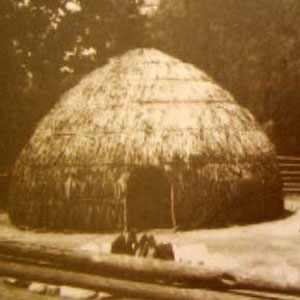Indian Period
(2000 B.C. – 1769)

- When the Spanish arrived in 1769, Native Americans known as the Tongva inhabited most of what is now Los Angeles County (including the San Fernando Valley), some of the Channel Islands and portions of Orange County.
- The Spanish called the Tongva “Gabrieliños” as they were they native group associated with the Mission San Gabriel.
- The Tongva village site of “Kaweenga” was located near the Campo. The term Cahuenga, for which the Pass was named, is a Spanish spelling of that village.
- The basic lifestyle of the Indians was that of hunter-gatherers living in communities of 50 to 200 or more individuals.
- The Tongva had a sophisticated social structure headed by a chief known as a Tomyaar.
- The Gabrieliño were skilled craftsmen who made intricate baskets that could hold water and carved figurines and stone bowls from soapstone, sometimes inlaid with shell.
- The people were characterized as robust, handsome, brown-skinned and frequently adorned with tattoos.
- Their homes were conical, with a framework of branches covered with rush mats.
- The Tongva had extensive trade networks with their neighbors who included the Chumash, Cahuilla, Serrano, Mojave among others.
- Soapstone, asphaltum and shell beads were some of the items the Gabrieliño traded in exchange for food products, furs, hides, obsidian and salt.
- The Gabrieliño homeland was rich in natural resources. This wealth of resources, coupled with an effective technology and a sophisticated system of trade and ritual exchange, resulted in a society that was among the most materially wealthy and culturally sophisticated of the California Indian groups. (McCawley 1996)